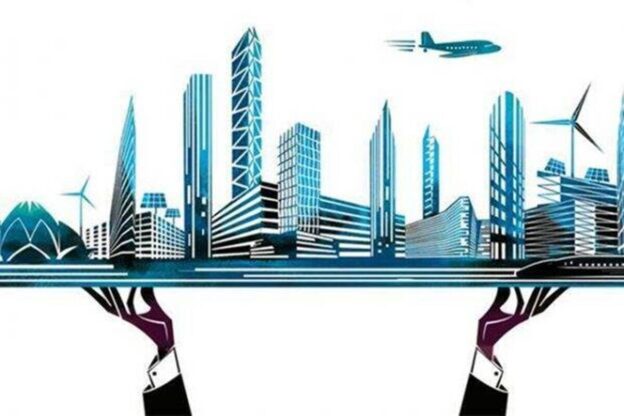The CDRI, launched by Prime Minister Narendra Modi in 2019, is an international partnership aimed at enhancing the resilience of infrastructure systems, particularly in the face of climate change-related disasters.
According to the biennial report from the Coalition for Disaster Resilient Infrastructure (CDRI), the annual average loss (AAL) in essential infrastructure sectors due to disasters and climate change currently ranges between $301 and $330 billion globally. When you factor in health and education infrastructure, along with building stock, this figure expands to a range of $732 to $845 billion. This represents about one-seventh of the global GDP growth for the 2021-2022 financial year, with nearly half of this risk being borne by low- and middle-income countries.
The CDRI, launched by Prime Minister Narendra Modi in 2019, is an international partnership aimed at enhancing the resilience of infrastructure systems, particularly in the face of climate change-related disasters.
Low- and middle-income countries (LMICs) are confronted with a multifaceted challenge. They have a substantial infrastructure deficit that hampers social and economic development, coupled with vulnerable and substandard infrastructure due to deficiencies in infrastructure governance. These challenges are exacerbated by the loss and damage to assets caused by disasters and disruptions in services. Additionally, much of their existing infrastructure is ill-suited to address the challenges posed by climate change and rapid technological advancements.
Key highlights from the report:
The report emphasises that extreme climate hazards intensify the risk of disasters, asset loss, and service disruptions, and the functionality of existing infrastructure may diminish. Although efforts to mitigate climate change are altering the way infrastructure systems are designed and used, with a shift towards carbon-neutral and carbon-negative development in sectors like energy and transportation, the global average annual loss (AAL) in infrastructure due to climate change still stands at $301 to $330 billion.
The report reveals that 30% of the global AAL is linked to geological hazards, while 70% is associated with climatic hazards. In essence, climate change significantly increases the AAL. High-income countries may experience an 11% increase in their total infrastructure AAL, while middle-income countries could see an increase of 12 to 22%, and low-income countries may face a 33% increase. Consequently, climate change will have a more substantial impact on countries with significant infrastructure deficits, weak infrastructure governance, limited fiscal capacity, and minimal private investment.
The report highlights that many of the countries facing the most significant increase in risk due to climate change are in Sub-Saharan Africa and the Middle East. Moreover, climate change can significantly affect the annual average loss of hydropower generation in countries where hydropower is a primary energy source.
The report also points out the inequality in infrastructure investment. High-income countries have a per capita capital stock value of $200,000, compared to $37,000 in upper-middle-income countries, $8,000 in LMICs, and $3,000 in low-income countries. This inequality in investment is widening the gap in infrastructure and hindering social and economic development, especially in lower-income countries.
The COVID-19 pandemic has further impeded progress toward achieving sustainable development goals.
Climate change poses challenges to service resilience, such as the need for additional power generation to cope with heatwaves, improved stormwater drainage to prevent surface water flooding, and the risk of water scarcity due to extreme drought. Rapid changes in the provision and usage of services, like the transition to electric mobility, necessitate new infrastructure while leaving behind stranded assets.
The report emphasises that only a few low-income countries have the financial capacity to address their infrastructure deficit, maintain existing infrastructure, transition to net zero emissions, and enhance asset and service resilience. These countries also struggle to attract private investment due to the widening gap between high-income countries and LMICs. In 2021, 80% of private infrastructure investments were directed toward high-income countries, with a substantial portion going into renewable energy generation. The gap in investments is especially pronounced in Sub-Saharan Africa.
High-income countries and middle-income countries with large economies have high absolute risk but low relative risk. In contrast, countries like the Philippines, Bangladesh, Vietnam, Myanmar, Peru, Honduras, and Ecuador face high levels of both absolute and relative risk, making them susceptible to large-scale losses and challenges to their resilience.
Small Island Developing States (SIDS) generally have low absolute risk due to their small size but high relative risk. This means they may have difficulty recovering from infrastructure loss and damage due to their limited resources.
https://www.financialexpress.com/business/infrastructure-climate-induced-damage-costs-global-infrastructure-over-300-billion-annually-says-cdri-report-3267267/





